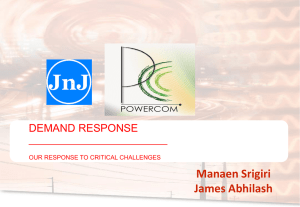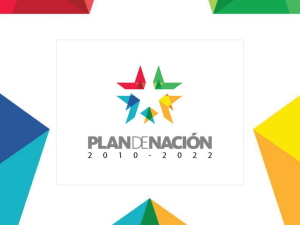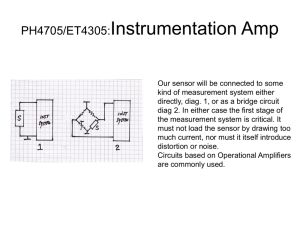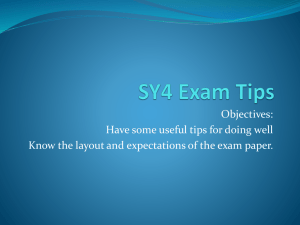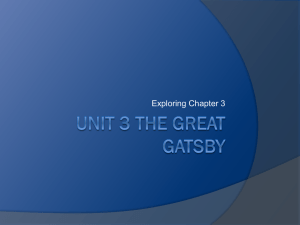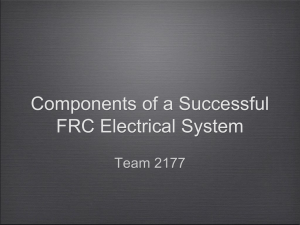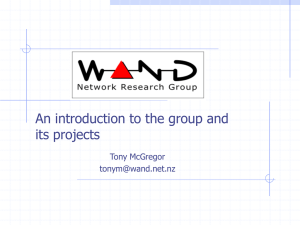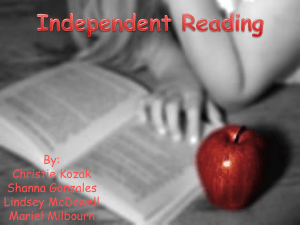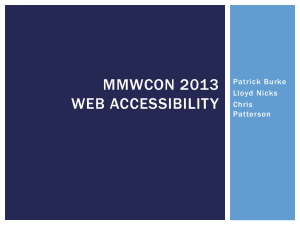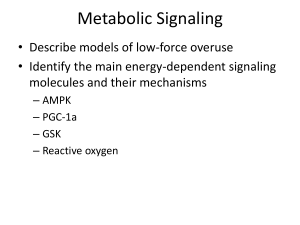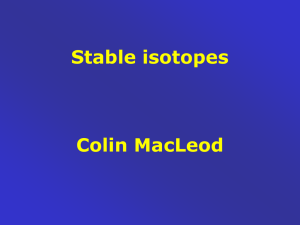Literacy Plan PowerPoint
advertisement
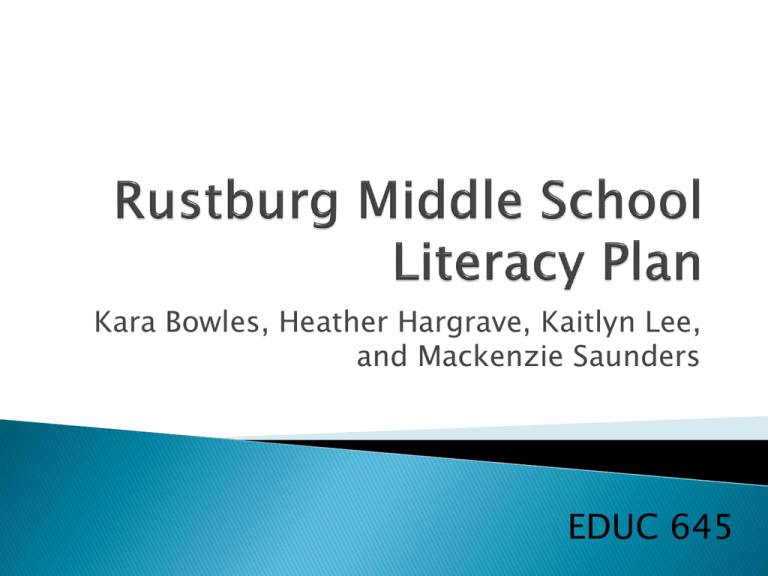
Kara Bowles, Heather Hargrave, Kaitlyn Lee, and Mackenzie Saunders EDUC 645 Rustburg Overview •Rustburg is located in Campbell County. It is a rural county, around 504 square miles, housing 55,163 people (United, 2012). •The population is predominantly white, about 83%. The other races are estimated at 14% black, 1% Asian, and about 2% Hispanic (2012). (Murphy, Location of Campbell County, VA) Graduation Rates •The poverty rate for years 2007-2011, was 13.7% (United, 2012). •For the county’s high school diploma rate through those same years was 82.6% (2012). •Only 16.1% of people held a bachelor’s degree from the years 2007-2011 (2012). Rustburg Middle School Demographics 6th grade: 213 students 7th grade: 230 students 8th grade: 217 students (Virginia, 2013). •We focused on grade 7 (187 Caucasians, 28 African Americans, 3 Asians) (2013). •61% Caucasians, 50% African Americans, and 100% of Asians passed the 2013 Spring SOL (2013). •The school does not have a Reading Specialist. There are Smart boards present in the school, for the first time this year (and for the entire county) but only in the MATH classrooms. Campbell County School District Rustburg Middle School is number 10 on the map. (Campbell County Public Schools, Map of Campbell County Schools) Section 1: Literacy Need •The Literacy need for Rustburg Middle School was determined from the Reading, Non-writing, SOL. The students needed the most help in demonstrating comprehension of nonfiction texts. •On the SOL, 14 questions were answered correctly by less than 70% of students. •Remaining 6 questions were answered correctly by more than 70% of students. (This information came directly from the 2013 Spring SOL SPBQs) So what was our area of FOCUS? -Places that indicated extreme deficits in comprehension nonfiction were: -drawing conclusions based on explicit information -summarizing informational texts -identifying organization structure -analyze author’s use of text structure Spring 2012 SRBQ SOL Data Section 2: Possible Solutions 1. Achieve 3000: KidBiz3000 and TeenBiz3000 http://www.achieve3000.com/about-achieve3000 2. Voyager Expanded Learning http://www.voyagerlearning.com/ 3. ReadWorks.Org http://www.readworks.org/ 4. Reading Quest http://www.readingquest.org/ 5. Making Meaning http://www.devstu.org/making-meaning 6. AMP Reading System- Pearson http://www.pearsonschool.com/index.cfm?locator=PSZu68&PMDbSiteId =2781&PMDbSolutionId=6724&PMDbSubSolutionId&PMDbCategoryId=3 289&PMDbSubCategoryId=24806&PMDbSubjectAreaId&PMDbProgramId= 27098 Achieve 3000: KidBiz3000 and TeenBiz3000 • Web-based literacy program in vocabulary, comprehension, fluency, and writing for students in grades 2-12. •KidBiz3000 grades 2-5 •TeenBiz3000 grades 6-12 •Pre-test is given when students first log in (Achieve, 2013). Voyager Expanded Learning •50 minute reading intervention system •DVD’s are used with teen hosts •Uses high interest topics, such as forensics, to keep students motivated (Voyager, 2013). ReadWorks.org •Aligned with Common Core and state standards •Gives teachers the research-proven tools and support •Provides lessons, research-based units, leveled non-fiction passages for free (ReadWorks, 2013). Reading Quest •Builds fluency in reading and writing •Books are written at or below level •Maintains close topic correlation to social studies and science •Has student handbooks for students to use before, during, and after reading. •Program supports research-based instructional practices (Reading, 2012). Making Meaning •Aligns with Common Core Standards •Designed to be in read-aloud/shared reading forms •Teaches how to comprehend and addresses the need of comprehension in nonfiction text by: •reading a variety of high-quality texts and genres •read for key ideas, details, craft, and structure •synthesize, evaluate, and conduct analysis of text •refer to text to support thinking •Focuses on social and academic development as well as being responsible for their own education (Making, 2013). AMP Reading System--Pearson •Comprehensive research-based reading intervention program for middle and high school students •Designed primarily for students reading at the third-to-sixth grade reading level •AMP system comes with: -student guides -Phonics Masters books -Assessment Masters (progress monitoring) -teacher’s editions -professional development DVDs -PowerStart training CD -Customized Reading Strategies -Play Away Device -AMP library books -Online CD for AMP reading library (AMP, 2008). Section 3: Solution AMP Reading System—Pearson Description: AMP is a three part system which includes instruction on reading comprehension strategies taught in isolation one at a time. In addition to teaching one reading comprehension strategy at a time (over a three to six week period), the program provides teacher modeling and direct instruction in fluency, and presents eight new vocabulary words (those often encountered frequently in middle and high school texts) at the beginning of each lesson. This program is primarily designed for middle or high schools students reading at the third-to-sixth grade reading level (AMP, 2008). Justification •We chose this solution because this program allows help with the biggest gap in understanding on the Student Performance by Question from 2012-2013 English nonreading SOLs, which was comprehension of nonfiction text. •“The AMP Library Books provide daily opportunity for high-interest reading at students’ independent reading levels with 85% nonfiction topics selected by polling secondary students (AMP, 2008).” Methods, Materials, Techniques, and Strategies needed to implement • Strategies that are provided in the instruction to enhance students reading abilities include: •setting goals for students •engaging activities •vocabulary enhancement/study •independent reading •guided practice •evaluating their learning •Embedded assessments (AMP, 2008). Materials needed per classroom: •2 Consumable Student Guides per Student (Volume 1 & Volume 2) •2 Teacher's Editions (Volume 1 & Volume 2) • Student Novels (1 of each of the 7 titles) per Student •1 Assessment Masters •1 Phonics Masters (Levels 1 & 2 only) •1 of each Customized Reading Strategies (Social Studies, Math, Science, Language Arts) • 1 PowerStart CD-ROM (AMP, 2008). Implementation Process 1) Start by teaching the program to the English teachers in the seventh grade prior to school beginning. 2) Test all the students first to see what their reading levels are. 3) Reference the AMP reading level. **There are three reading levels according to the AMP Reading System (2008). Level 1 is for grades 3-4, level 2 is for grades 4-5, and level 3 is for grades 5-6. 4) Following summer or winter break, we would hold a professional development day (or two) to teach content area teachers (in the seventh grade) how to use the program and how to implement AMP across the curriculum. 5) The next year we would start professional development, over the summer, to the sixth and eighth grade English teachers. 6) Following winter break, we would provide professional development to the rest of the content area teachers in sixth and eighth grades Section 4: Professional Development Plan Professional Development Books •No books were listed due to the online and onsite professional development options. • Instead, there are on-the-site workshops, and job-embedded coaching and modeling sessions (AMP, 2008). Training of Instructional Personnel •The training for AMP has a choice between onsite Professional Development or online Professional Development, helping to ease administrative, reading officials, and teachers’ concerns about the commute distance and cost. •Website link: http://www.mypearsontraining.com/. Motivation for Change--How we will get the staff to buy into this change? •Arrange a meeting with the 7th grade teachers, discuss the data we used to determine the literacy need (SRBQ from Spring SOL), explain the AMP reading program and how it could benefit the students’ literacy needs, and provide incentive options for teachers and students when meeting goals or growth in reading levels (could be prizes of any kind, certificates, books, etc.) Description of our role in the process--how will we support the teachers both short and long term? • As the persons whom suggested and is implementing the plan across the seventh grade, we will Inform, justify, model, and assist teachers with whatever they may need assistance or clarification with, ranging from how to pre and post assess, progress monitor, or even how to conduct a small or whole group lesson using the AMP Reading Program. • Short term– we will help implement the plan step by step (through meetings and Professional Development days) and to use the data from assessments and progress monitoring to guide instruction •Long term—we will assist teachers in mapping out the process, and figuring out long term goals for students. In addition to these roles, we will be a resource for teachers both in and outside of the classroom. Section 5: Timeline for Implementation Timeline of Hypothetical Dates: Date Early August 2014 Implementation Process Winter Break (December) 2014 Professional Development Day 1 (7th Grade English Teachers) Professional Development Day 2 (7th Grade English Teachers) Professional Development Day 1 (Content Area 7th Grade Teachers) Winter Break (December) 2014 Professional Development Day 2 (Content Area 7th Grade Teachers) Following August 2015 Following Winter Break (December) 2015 Professional Development Day 1 (6th and 8th Grade English Teachers) Professional Development Day 2 (6th and 8th Grade English Teachers) Professional Development Day 1 (Content Area 6th and 8th Grade English Teachers) Following Winter Break (December) 2015 Professional Development Day 2 (Content Area 6th and 8th Grade English Teachers) Early August 2014 Following August 2015 How and how often will we monitor the implementation and success of the plan? •Bi-weekly faculty meetings and by using embedded assessments in the program to guide teacher’s instruction. •At the meetings, the short term goals we will reviewed, and progress towards those goals will be determined by viewing the data gathered from teachers over the past weeks. Include and adjustment to the hypothetical problem that will occur during implementation. •Hypothetical problem-- teachers, SPED, Principal, and/or Reading Specialist would not be able to meet bi-weekly to discuss the progress. • Adjustment: hold online Discussion Boards which can be accessed on any school-issued computer, which teachers could complete at home or at school.) References Achieve 3000: KidBiz3000 and TeenBiz3000 (2013). Retrieved from http://www.achieve3000.com/about-achieve3000. AMP Reading System (2008). Pearson Instruction Resources: AMP Reading System. Retrieved from http://www.pearsonschool.com/index.cfm?locator=PSZu68&PMDbSiteId=278 1&PMDbSolutionId=6724&PMDbSubSolutionId=&PMDbCategoryId=3289&PMD bSubCategoryId=24806&PMDbSubjectAreaId=&PMDbProgramId=27098. Campbell County Public Schools. (Designer). Map of Campbell County Schools [Web Graphic]. Retrieved from http://www.campbell.k12.va.us/index.aspx?page=5. Making Meaning (2013). Retrieved from http://www.devstu.org/makingmeaning. Murphy, N. (Photographer). (2010, Feb 15). Location of Campbell County, VA [Web Graphic]. Retrieved from https://familysearch.org/learn/wiki/en/File:Location_of_Campbell_ County,_Virginia.png. Reading Quest (2012). Retrieved from http://www.readingquest.org/. ReadWorks.Org (2013). Retrieved from http://www.readworks.org/. United States Census Bureau (2012). Campbell County, Virginia. Retrieved from http://quickfacts.census.gov/qfd/states/51/51031.html. Virginia Department of Education (2013). Rustburg Middle. Retrieved from https://p1pe.doe.virginia.gov/reportcard/report.do?division=16&sc hoolName=6398 Voyager Expanded Learning (2013). Retrieved from http://www.voyagerlearning.com/.
